The day began under a blazing sun in Chilas.
Yesterday, this mountain town had been drenched in rain and wrapped in the soft, soothing mist of evening. But this morning, the sky was clear, the air heavy with heat, and the sun glared down from a pale blue dome. As I loaded the last of my luggage onto Rangeeli, my motorcycle, the warmth of the metal under my hand reminded me that we were leaving the cool northern valleys behind — at least for now.
Today’s destination was ambitious: Astore, and beyond it, the remote villages of Tarishing and Rupal, nestled in the shadow of Nanga Parbat, the ninth-highest mountain in the world.
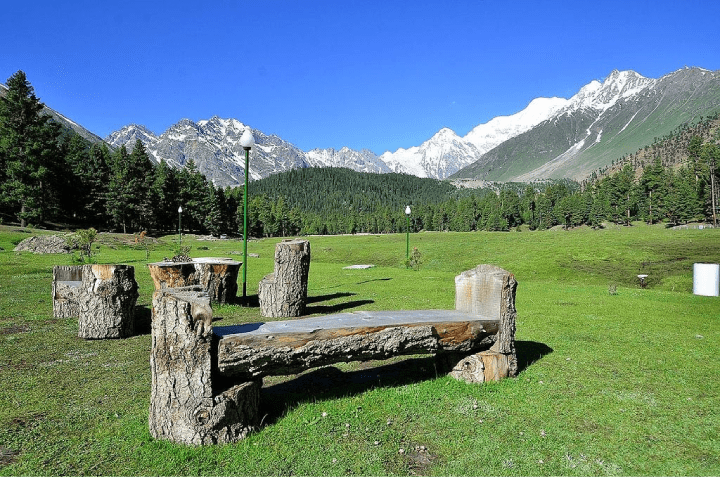
The road to Astore had been closed the previous day due to landslides. But now, word was out that the path had been cleared. The journey ahead would be long and unpredictable, but also promising — a perfect blend of thrill and beauty.
We met a few well-wishers that morning — travelers and locals alike. Awais, a kind man from Faisalabad, introduced me to his young son, who wanted to learn vlogging. Another gentleman handed me a small souvenir bracelet, insisting that I take it as a token. I tried to decline politely, but he smiled and pressed it into my hand. “For you, Abrar.”
Such gestures, simple yet heartfelt, remind me why I love traveling across Pakistan — the warmth of strangers, the unspoken bond of the road.
“Bismillah,” I said softly, starting the engine. “May Allah make this a safe and memorable journey.”
Riding Along the Indus
By ten in the morning, we were rolling out of Chilas, our tires humming against the asphalt. The Indus River accompanied us like a loyal companion — vast, powerful, and shimmering under the sun.
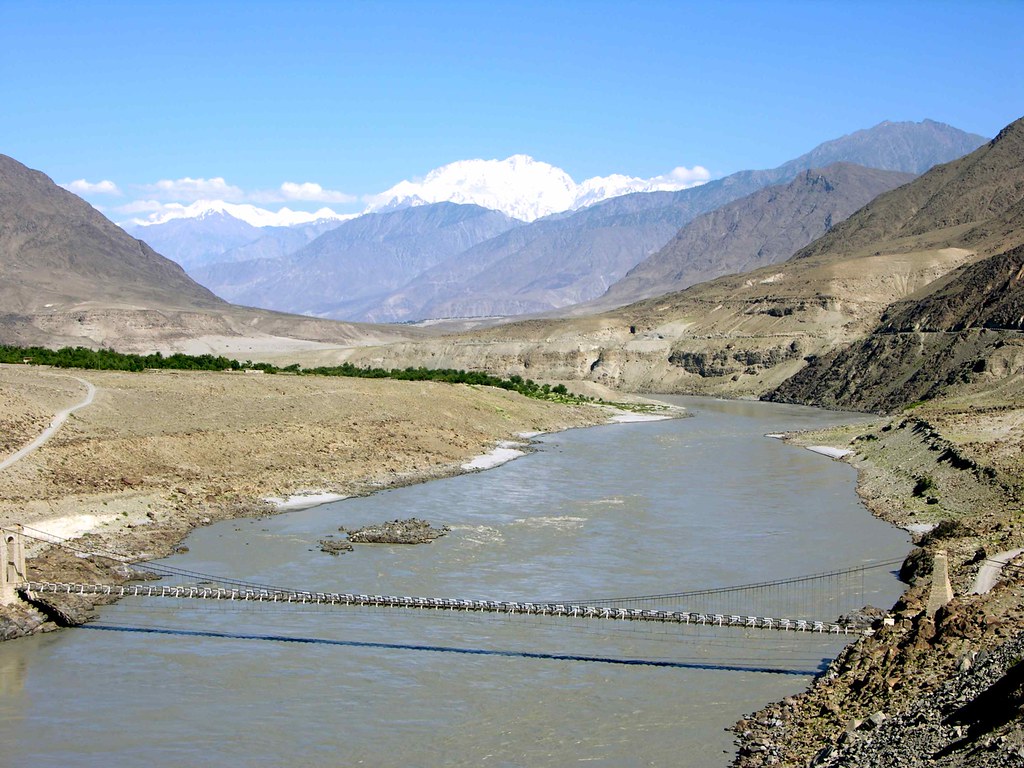
I’ve always found something magnetic about water. Perhaps it’s the way it mirrors the sky or the soothing rhythm of its flow. Riding beside the Indus, with mountains towering on both sides, was pure joy.
The road itself was a delight — smooth in most stretches, with only occasional bumps where landslides had scarred the surface. The landscape was grand yet unforgiving, a mixture of soft green valleys and rough, sharp ridges that looked as if they had been sculpted by time and storms.
We passed a few small towns — dusty, sunlit settlements with fuel stations, ATMs, and little kiosks selling water and chips. Life here seemed simple, yet resilient.
At one point, I slowed down to observe the mountain wall beside the road. Its surface looked fragile, made of loose stones embedded in dry soil. “These mountains are alive,” I said into the mic. “When it rains, those rocks lose their grip and roll down. That’s what causes all the landslides.”
I wasn’t exaggerating. The section ahead was proof of nature’s might.
Through the Landslide Zone
“This section looks kind of scary,” I said, staring up at the towering cliffs. They rose vertically, as if carved by an invisible knife. Mud and gravel covered parts of the road, and here and there, boulders lay like silent warnings.
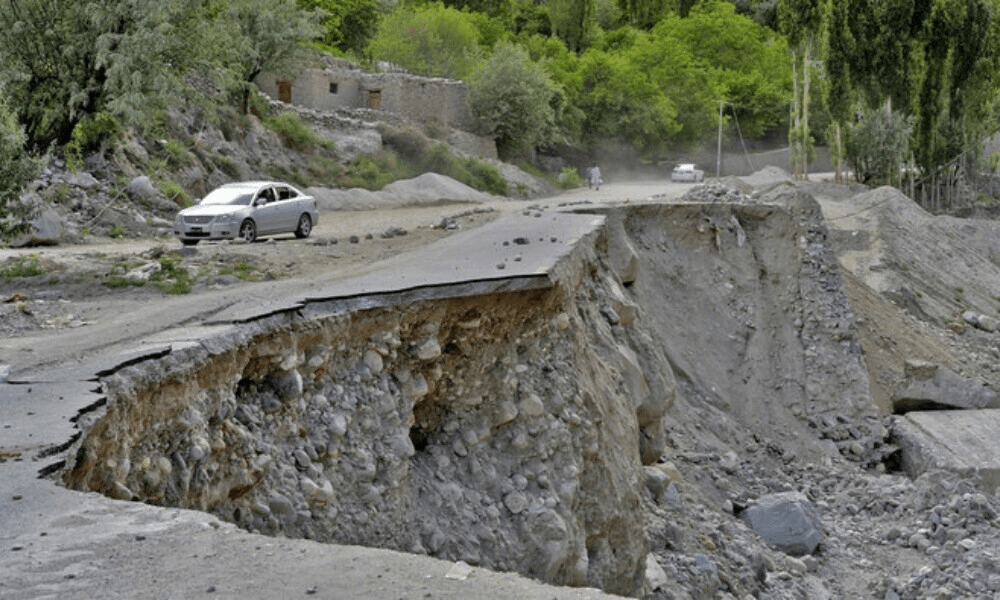
I remembered getting stuck here once before — stranded for hours when a landslide had blocked the way. The memory added weight to the moment.
“Excuse me, brother,” I asked a road worker standing nearby. “Is this where the landslide happened yesterday?”
He nodded. “No, that was in the next section,” he said. “Much worse there. But don’t worry — it’s all cleared now.”
Still, the air felt heavy. We crossed carefully, the engines echoing against the cliffs. Dust rose as trucks and jeeps crawled forward, their tires crunching over the rubble. A jam had formed, the result of yesterday’s blockage. While four-wheelers stood trapped in the queue, we bikers managed to snake our way through.
As we passed the cleared section, I couldn’t help but look back. The sight of loose mud clinging to the cliff, the raw wound of fresh earth — it was a reminder of how small we are against nature’s moods.
A Chance Encounter
Just beyond the landslide zone, as we finally reached open road again, I was flagged down by a group of travelers waving excitedly.
“Abrar! Assalam Alekum!” one of them shouted, grinning widely.
I stopped the bike, surprised and delighted. They were fans who had recognized me from my YouTube channel. One of them stepped forward eagerly. “We just watched your whole India tour!” he said. Another added, “We were looking for you in Gilgit. And here we meet — what luck!”
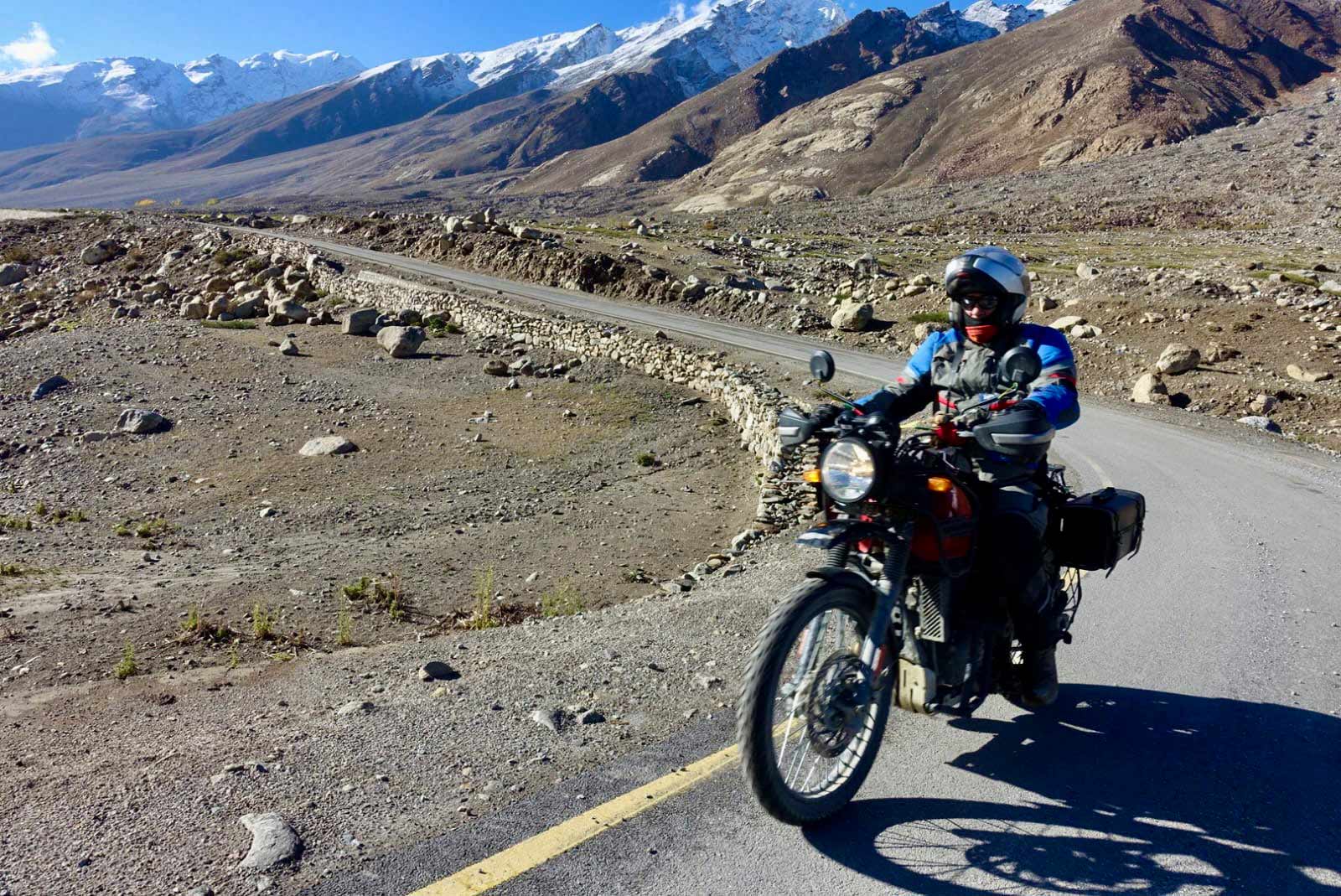
We shook hands, laughed, took pictures, and shared quick stories. Their warmth was genuine, their excitement contagious. Moments like these — unexpected connections in the middle of nowhere — make a journey so much more special.
When we finally rode off, I couldn’t wipe the smile from my face.
To Astore: A Road of Wonders and Warnings
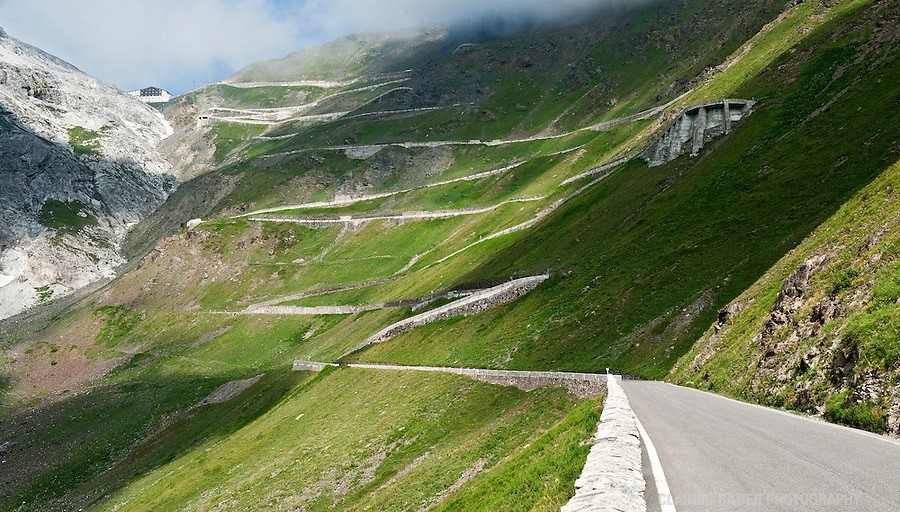
The Astore Road diverged from the main Karakoram Highway near Raikot — the same point where the track to Fairy Meadows begins. The contrast was immediate: the wide, steady KKH gave way to a narrow, winding path carved precariously along the mountain’s edge.
“Wow… just look at this,” I said. “A steep fall on one side, a wall of rock on the other.”
The cliffs leaned over us ominously, and the scars of old landslides were everywhere. Fallen rocks lined the road’s edge. “You never know what might fall,” I thought aloud. “It’s scary, yes — but thrilling too.”
Despite the dangers, the beauty was overpowering. The Indus gleamed far below, and the road snaked along its curves like a silver ribbon. Villages appeared every now and then — clusters of stone houses surrounded by fruit trees and terraces.
“I remember falling in love with this road the first time I came here,” I said. “Back then, it was dark, and I couldn’t see much. But today… today, it’s showing me its true face.”
At one bend, we noticed a small waterfall tumbling down the rocks. Ali, my travel companion, waved for me to stop. “Let’s check it out!”
It was barely a two-minute detour. We parked and walked closer — a hidden gem, water gushing fiercely down the mountainside, scattering silver droplets into the air. Near it was a makeshift rope carriage used by locals to cross the river. Watching someone pull themselves across, suspended above the torrent, was both terrifying and mesmerizing.
“This,” I said quietly, “is adventure.”
Arrival in Astore
By the time we entered Astore, the afternoon sun had softened into a warm glow. The town lay peacefully between mountains, its bazaar alive with chatter and color. We refueled the motorcycle and stopped briefly to stretch.
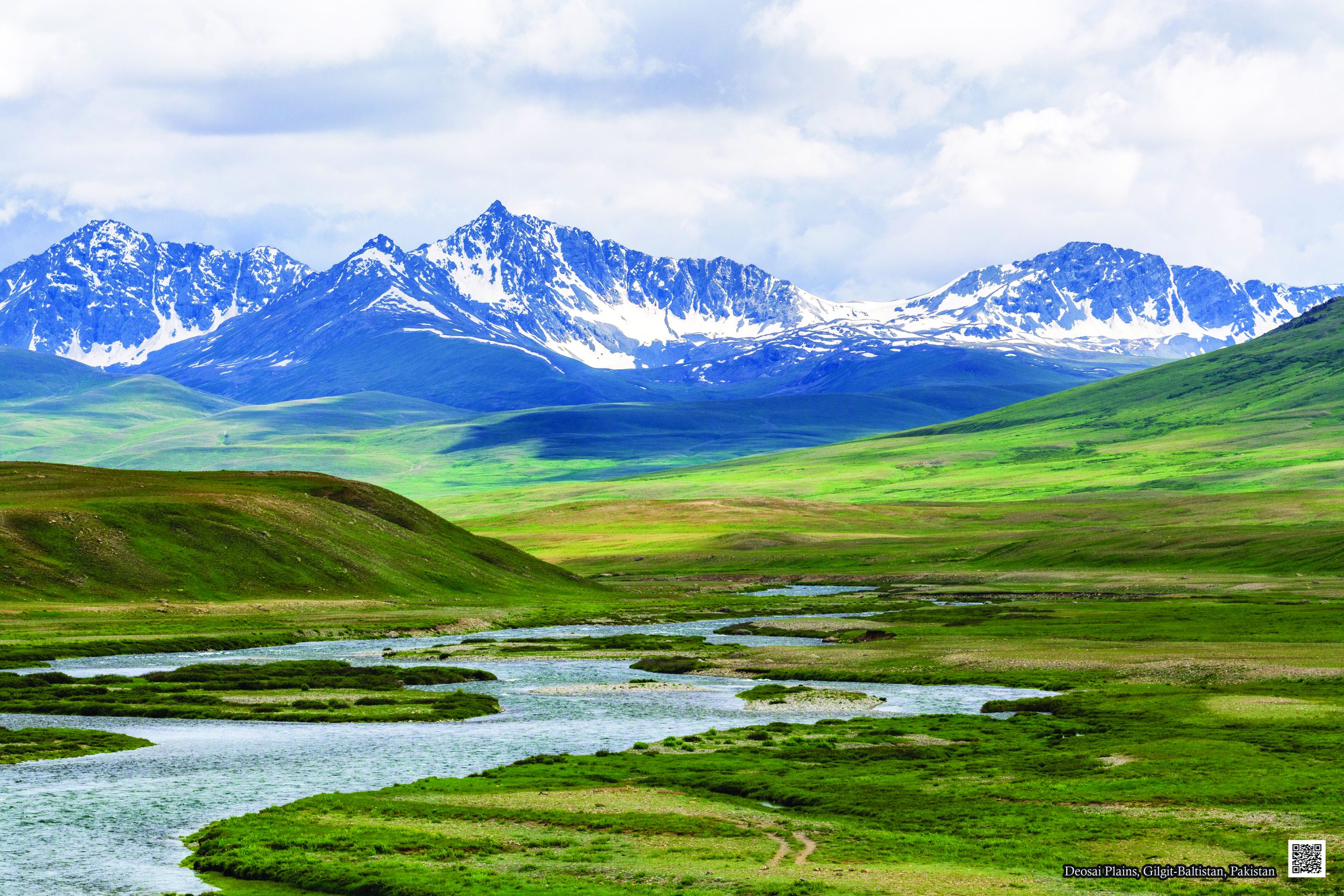
Astore is the gateway to many treasures — Deosai Plains, Rupal Valley, and countless glaciers and lakes hidden deep in the folds of the Himalayas. From here, one road continues to Skardu, while another climbs toward Tarishing and Rupal.
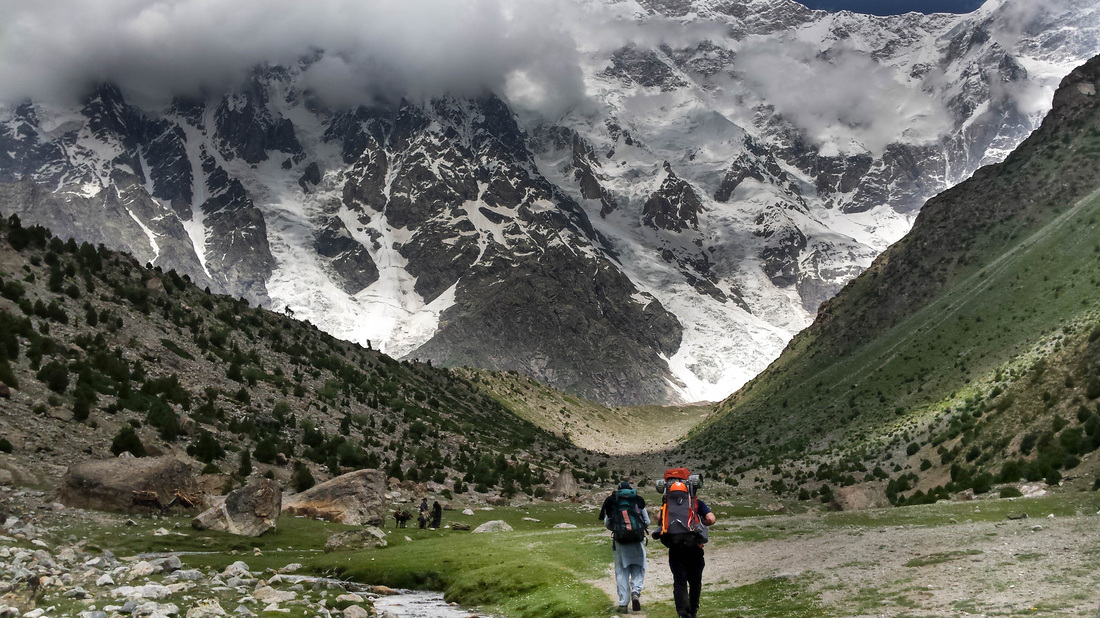
The weather had changed again. A cool breeze was blowing now, carrying the scent of damp earth. Locals told us that Deosai had received heavy snowfall earlier that morning and had been closed temporarily. Even in July, the northern mountains play by their own rules — sunshine one moment, snowstorm the next.
We found a small roadside café with neat wooden chairs arranged under a tin roof. The place looked welcoming, and we decided to have a quick meal before moving on.
As we ate, clouds began to gather again over the peaks. “Hope it doesn’t rain before we reach Tarishing,” I said, tightening the vents of my jacket.
The Road to Tarishing
The asphalt ended a few kilometers after Astore. What lay ahead was a rugged, narrow road hugging the side of the mountain — not exactly off-road, but demanding attention. The Indus had faded behind us, replaced by smaller, swifter streams.
“This section must be five or six years old at most,” I guessed. “Landslides must have reshaped it many times.”
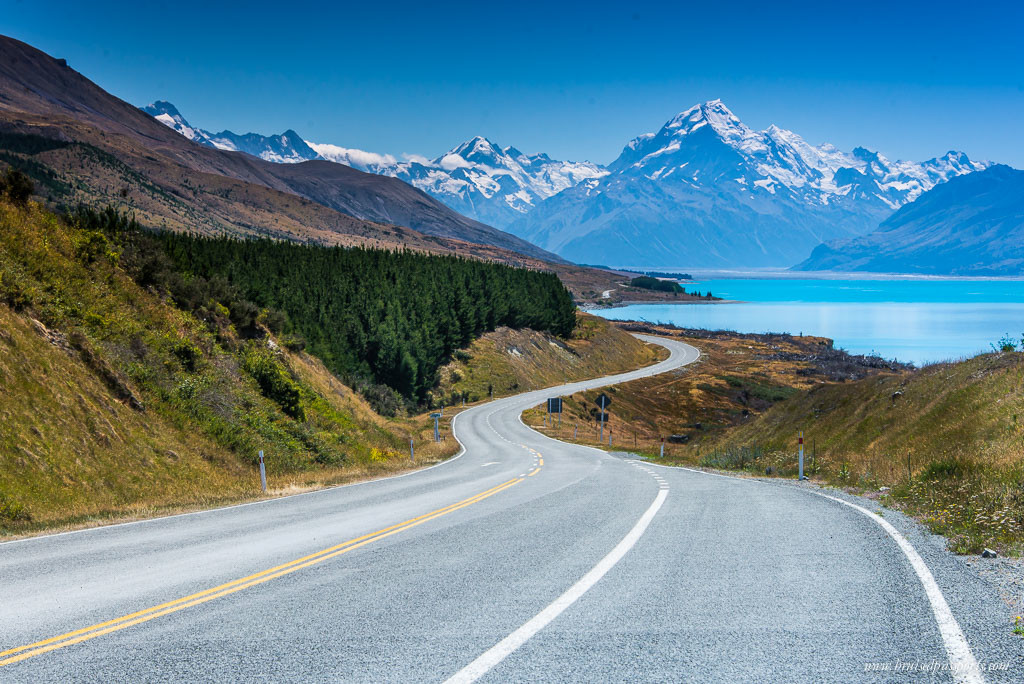
The further we went, the greener it became. Valleys opened up below, dotted with patches of cultivated land and the occasional cluster of homes. The constant sound of rushing water followed us — every few bends, a new stream appeared, tumbling down from snowmelt above.
When we stopped briefly near a particularly large waterfall, I noticed how clean and clear the water was compared to the main river. “This must be fresh glacier melt,” I said. “You can almost taste the purity.”
Then came the rain — gentle at first, then steady. The mountains disappeared behind veils of mist.
We met a local boy named Waleed in a small settlement called Chorit. “You can reach Rupal Base Camp directly from here,” he told us, “about forty-five minutes’ ride.”
“Forty-five minutes by your standards or ours?” I teased.
“Yours,” he grinned.
The idea was tempting, but the weather wasn’t cooperating. We decided instead to stay in Tarishing for the night.
Tarishing: A Village Beneath Giants
The first glimpse of Tarishing took my breath away. Set against the backdrop of colossal, snow-covered peaks, the village looked like something out of a painting. Streams flowed in from every direction, weaving through green meadows. Wooden houses clung to the slopes, and smoke curled lazily from chimneys.
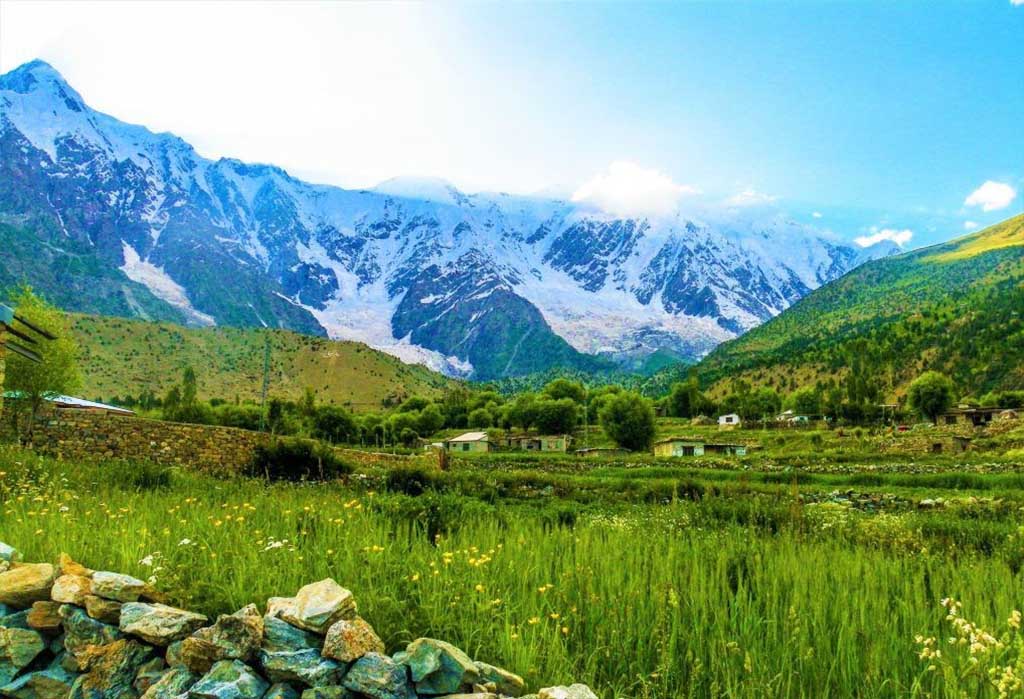
As we entered, we were greeted warmly by a few locals. One of them recognized me. “Are you Abrar?” he asked. When I nodded, his face lit up. “I’ve watched all your videos! Welcome to Rupal Valley.”
He insisted we stop for tea, but we were eager to reach our accommodation before the rain worsened.
We rode across a tiny wooden bridge that creaked under the tires and arrived at Rupal Resort, our resting place for the night. The resort was modest but well-kept, standing quietly in the lap of the mountains.
The Tourist Police, ever courteous, helped us with directions and parking. “You won’t find more helpful policemen anywhere else,” I said truthfully. Their presence adds a layer of safety and hospitality that travelers deeply appreciate in these remote areas.
A Night in Rupal
The room we got at Rupal Resort exceeded every expectation. Clean, spacious, and surprisingly modern — complete with hot water, a tidy washroom, and a view that, on a clear day, would frame Nanga Parbat itself.
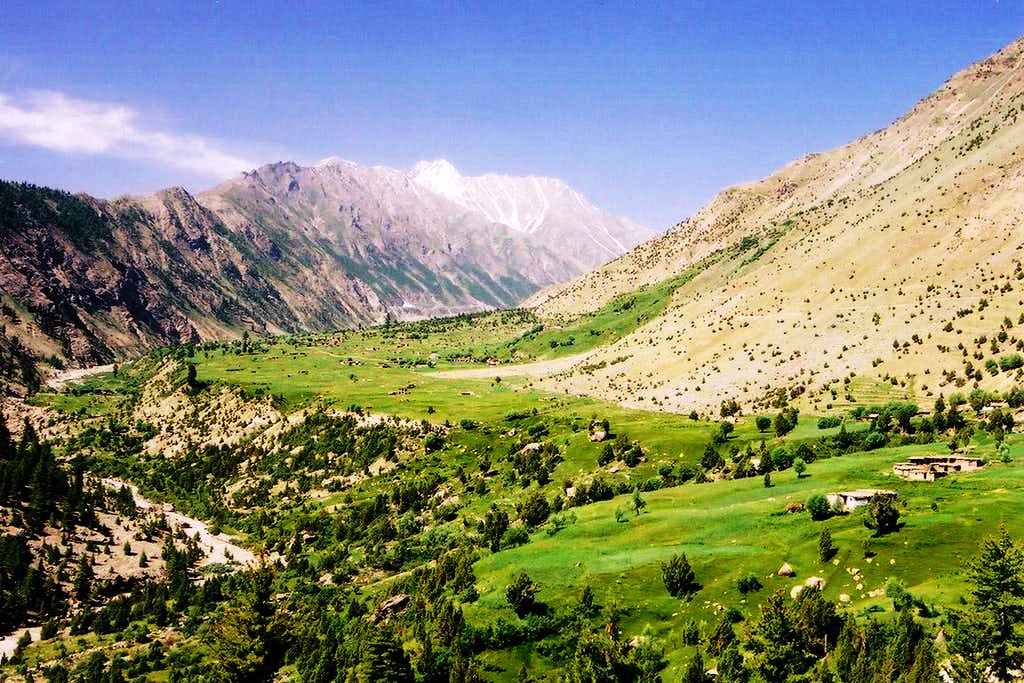
The staff told us that the mountain was currently hidden behind clouds but would likely reveal itself in the morning. I stood by the window, watching raindrops trickle down the glass, imagining the mighty peak beyond the mist.
We paid PKR 12,000 for the room, including breakfast — a fair price for comfort at 9,000 feet above sea level.
Dinner was served soon after. “Chicken karahi,” Ali announced with a grin. “Like always.” We laughed, breaking roti and savoring the meal as thunder rumbled faintly outside.
As night fell, a hush settled over the valley. The rain softened to a drizzle, and somewhere in the distance, the sound of a waterfall echoed like a lullaby.
I thought of how far we had come — from the rain-soaked slopes of Batakundi to the crowded roads of Chilas, across landslides, rivers, and ridges — now finally resting beneath one of the tallest mountains on Earth.
Reflections
Traveling through northern Pakistan is never just a journey across land; it’s a passage through moods — of nature, of weather, of self. One moment, the road challenges you with fear and uncertainty; the next, it rewards you with serenity so profound it leaves you silent.
As I lay in bed, I could feel the pulse of the mountains outside — the distant rush of water, the whistle of wind, the heartbeat of a land both fierce and tender.
“Tomorrow,” I whispered, “we’ll see Nanga Parbat.”
And with that thought, I drifted into sleep, grateful for another day on the road — another story written on the winding paths of Gilgit Baltistan.








